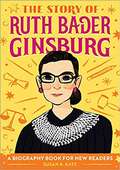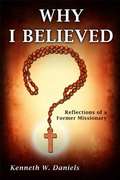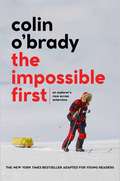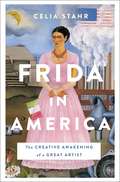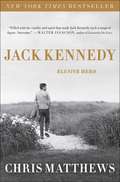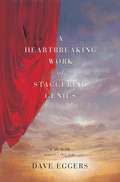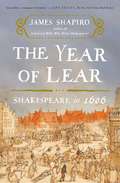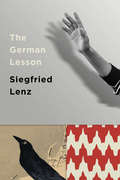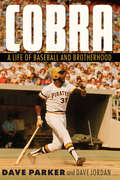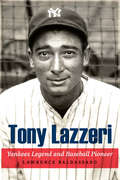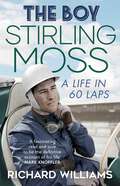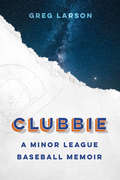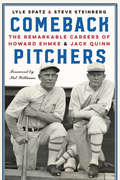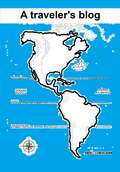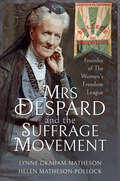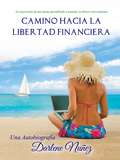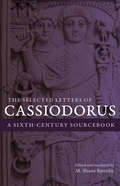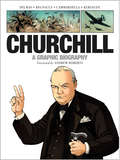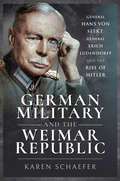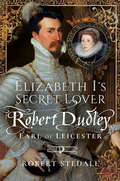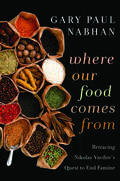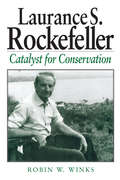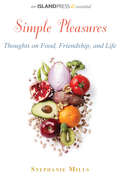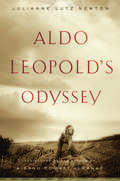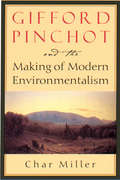- Table View
- List View
The Story of Ruth Bader Ginsburg (The Story Of: A Biography Series for New Readers)
by Susan B. KatzIn this chapter book for kids ages 6-9, you’ll learn about how Ruth Bader Ginsburg became the second woman ever to serve as a judge on the Supreme Court of the United States. Before she fought for equal rights and made history, Ruth was a curious kid who loved to read about strong women who were making important changes. You can get inspired, too, with this unique standout among Ruth Bader Ginsburg children’s books for grades 1-2. <p><p> In school, Ruth wished girls could have as many opportunities as boys. She soon learned that by studying and working hard, she could change her life―and the world. Of all the Ruth Bader Ginsburg children’s books, this one really lets you explore how she went from a Jewish girl during World War II to one of the most celebrated leaders in America.
Why I Believed: Reflections of a Former Missionary
by Kenneth W. DanielsThis is a story of a true Christian who believed for nearly three decades, having grown up the son of evangelical missionary parents, later becoming a missionary himself. Yet he slowly lost his faith and now no longer holds it. In this part-autobiography, part-exposé, Ken traces his journey from evangelical missionary to secular humanist while remaining part of a committed Christian family. He looks back at a number of reasons he remained a believer for over a decade after his initial doubts began at university, critically evaluating each one in a separate chapter. Whether or not you agree with Ken's conclusions, you will find his journey and his reasons for taking it fascinating and informative. You will end up better understanding, if not appreciating, the mind of apostates whose desire is to follow the evidence wherever it leads.
The Impossible First: An Explorer's Race Across Antarctica (Young Readers Edition)
by Colin O'BradyIn this Young Readers Edition of Impossible First—perfect for fans of My Shot by Elena Delle Donne and Shaken by Tim Tebow—Colin O&’Brady vividly recounts his fifty-four-day, unsupported, record-shattering solo crossing of Antarctica using every ounce of his strength, years of training, and sheer force of will.Prior to December 2018, no individual had ever crossed the landmass of Antarctica alone, without support, and completely human-powered. But Colin O&’Brady was determined to do just that—even though ten years earlier a tragic accident raised doubts that he&’d ever walk again normally. O&’Brady&’s quest drew him into a head-to-head battle with British SAS Captain Louis Rudd—also striving to be &“the first.&” Enduring Antarctica&’s sub-zero temperatures and pulling a sled that initially weighed 375 pounds in complete isolation and through a succession of whiteouts, storms, and a series of near disasters, O&’Brady journeyed 932 miles to a world first. Honest, deeply moving, filled with moments of vulnerability—and set against the backdrop of some of the most extreme environments on earth, from Mount Everest to Antarctica—The Impossible First reveals how anyone can reject limits, overcome immense obstacles, and discover what matters most.
Frida in America: The Creative Awakening of a Great Artist
by Celia StahrThe riveting story of how three years spent in the United States transformed the Mexican artist/painter Frida Kahlo (1907-1954) into the artist we know today. Frida Kahlo adored adventure. In November 1930, she was thrilled to realize her dream of traveling to the United States, where she would spend time in San Francisco, Detroit, and New York. Still, leaving her family and her country for the first time was monumental. Only twenty-three and newly married to the already world-famous and much older Diego Rivera, she was at a crossroads in her life. The United States, with its magnificent beauty, horrific poverty, racial tension, anti-Semitism, ethnic diversity, bland midwestern food, and thriving music scene, pushed Frida in unexpected directions. Shifts in her style of painting began to appear, cracks in her marriage widened, and tragedy struck, twice, while she was living in Detroit. Frida in America is the first in-depth biography of these formative years spent in “Gringolandia,” a place that both fascinated and angered Frida. However, it was precisely her feelings of being a stranger in a strange land that fueled her creative passions and an even stronger sense of Mexican identity. With vivid detail, Frida in America re-creates the pivotal journey that turned Senora Rivera into the world-famous Frida Kahlo. CELIA STAHR is a professor at the University of San Francisco, where she specializes in modern American and contemporary art with an emphasis on feminist art and gender studies, as well as African and multicultural art. She holds a PhD in Art History from the University of Iowa and lives in the Bay Area.
Jack Kennedy: Elusive Hero
by Chris Matthews"What was he like?"Jack Kennedy said the reason people read biography is to answer that basic question. With the verve of a novelist, Chris Matthews gives us just that. We see this most beloved president in the company of friends. We see and feel him close-up, having fun and giving off that restlessness of his. We watch him navigate his life from privileged, rebellious youth to gutsy American president. We witness his bravery in war and selfless rescue of his PT boat crew. We watch JFK as a young politician learning to play hardball and watch him grow into the leader who averts a nuclear war.What was he like, this person whose own wife called him "that elusive, unforgettable man"? The Jack Kennedy you discover here wanted never to be alone, never to be bored. He loved courage, hated war, lived each day as if it were his last.Chris Matthews's extraordinary biography is based on personal interviews with those closest to JFK, oral histories by top political aide Kenneth O'Donnell and others, documents from his years as a student at Choate, and notes from Jacqueline Kennedy's first interview after Dallas. You'll learn the origins of his inaugural call to "Ask what you can do for your country." You'll discover his role in the genesis of the Peace Corps, his stand on civil rights, his push to put a man on the moon, his ban on nuclear arms testing. You'll get, more than ever before, to the root of the man, including the unsettling aspects of his personal life. As Matthews writes, "I found a fighting prince never free of pain, never far from trouble, never accepting the world he found, never wanting to be his father's son. He was a far greater hero than he ever wished us to know."
A Heartbreaking Work Of Staggering Genius: A Memoir Based on a True Story
by Dave EggersA Heartbreaking Work of Staggering Genius is the moving memoir of a college senior who, in the space of five weeks, loses both of his parents to cancer and inherits his eight-year-old brother. Here is an exhilarating debut that manages to be simultaneously hilarious and wildly inventive as well as a deeply heartfelt story of the love that holds a family together.
The Year of Lear: Shakespeare in 1606
by James ShapiroPreeminent Shakespeare scholar James Shapiro shows how the tumultuous events in England in 1606 affected Shakespeare and shaped the three great tragedies he wrote that year--King Lear, Macbeth, and Antony and Cleopatra.In the years leading up to 1606, since the death of Queen Elizabeth and the arrival in England of her successor, King James of Scotland, Shakespeare's great productivity had ebbed, and it may have seemed to some that his prolific genius was a thing of the past. But that year, at age forty-two, he found his footing again, finishing a play he had begun the previous autumn--King Lear--then writing two other great tragedies, Macbeth and Antony and Cleopatra. It was a memorable year in England as well--and a grim one, in the aftermath of a terrorist plot conceived by a small group of Catholic gentry that had been uncovered at the last hour. The foiled Gunpowder Plot would have blown up the king and royal family along with the nation's political and religious leadership. The aborted plot renewed anti-Catholic sentiment and laid bare divisions in the kingdom. It was against this background that Shakespeare finished Lear, a play about a divided kingdom, then wrote a tragedy that turned on the murder of a Scottish king, Macbeth. He ended this astonishing year with a third masterpiece no less steeped in current events and concerns: Antony and Cleopatra. The Year of Lear sheds light on these three great tragedies by placing them in the context of their times, while also allowing us greater insight into how Shakespeare was personally touched by such events as a terrible outbreak of plague and growing religious divisions. For anyone interested in Shakespeare, this is an indispensable book.
The German Lesson
by Siegfried Lenz“The German Lesson marks a double triumph––a book of rare depth and brilliance, to begin with, presented in an English version that succeeds against improbable odds in conveying the full power of the original.” —Ernst Pawel, New York Times Book Review Siggi Jepsen, incarcerated as a juvenile delinquent, is one day assigned to write a routine German lesson on the "The Joys of Duty." Overfamiliar with these “joys,” Siggi sets down his life since 1943, a decade earlier, when as a boy he watched his father, constable of the northernmost police station in Germany, doggedly carry out orders from Berlin to stop a well-known Expressionist, their neighbor, from painting and to seize all his “degenerate" work. Soon Siggi is stealing the paintings to keep them safe from his father. Against the great brooding northern landscape. Siggi recounts the clash of father and son, of duty and personal loyalty, in wartime Germany. “I was trying to find out,” Lenz says, "where the joys of duty could lead a people"
Cobra: A Life of Baseball and Brotherhood
by Dave Parker Dave Jordan&“For that period of time, he was the greatest player of my generation.&”—Keith Hernandez Dave Parker was one of the biggest and most badass baseball players of the late twentieth century. He stood at six foot five and weighed 235 pounds. He was a seven-time All-Star, a two-time batting champion, a frequent Gold Glove winner, the 1978 National League MVP, and a World Series champion with both the Pittsburgh Pirates and the Oakland A&’s. Here the great Dave Parker delivers his wild and long-awaited autobiography—an authoritative account of Black baseball during its heyday as seen through the eyes of none other than the Cobra. From his earliest professional days learning the game from such baseball legends as Pie Traynor and Roberto Clemente to his later years mentoring younger talents like Eric Davis and Barry Larkin, Cobra is the story of a Black athlete making his way through the game during a time of major social and cultural transformation. From the racially integrated playing fields of his high school days to the cookie-cutter cathedrals of his prime alongside all the midseason and late-night theatrics that accompany an athlete&’s life on the road–Parker offers readers a glimpse of all that and everything in between. Everything. Parker recounts the triumphant victories and the heart-breaking defeats, both on and off the field. He shares the lessons and experiences of reaching the absolute pinnacle of professional athletics, the celebrations with his sports siblings who also got a taste of the thrills, as well as his beloved baseball brothers whom the game left behind. Parker recalls the complicated politics of spring training, recounts the early stages of the free agency era, revisits the notorious 1985 drug trials, and pays tribute to the enduring power of relationships between players at the deepest and highest levels of the sport. With comments at the start of each chapter by other baseball legends such as Pete Rose, Dave Winfield, Willie Randolph, and many more, Parker tells an epic tale of friendship, success, indulgence, and redemption, but most of all, family. Cobra is the unforgettable story of a million-dollar athlete just before baseball became a billion-dollar game.
Tony Lazzeri: Yankees Legend and Baseball Pioneer
by Lawrence BaldassaroBefore there was Joe DiMaggio, there was Tony Lazzeri. A decade before the &“Yankee Clipper&” began his legendary career in 1936, Lazzeri paved the way for the man who would become the patron saint of Italian American fans and players. He did so by forging his own Hall of Fame career as a key member of the Yankees&’ legendary Murderers&’ Row lineup between 1926 and 1937, in the process becoming the first major baseball star of Italian descent. An unwitting pioneer who played his entire career while afflicted with epilepsy, Lazzeri was the first player to hit sixty home runs in organized baseball, one of the first middle infielders in the big leagues to hit with power, and the first Italian player with enough star power to attract a whole new generation of fans to the ballpark. As a twenty-two-year-old rookie for the New York Yankees, Lazzeri played alongside such legends as Babe Ruth and Lou Gehrig. He immediately emerged as a star, finishing second to Ruth in RBIs and third in home runs in the American League. In his twelve years as the second baseman for Yankee teams that won five World Series, he was their third-most productive hitter, driving in more runs than all but five American Leaguers, and hitting more home runs than all but six. Yet for all that, today Lazzeri is a largely forgotten figure, his legacy diminished by the passage of time and tarnished by his bases-loaded strikeout to Grover Cleveland Alexander in Game Seven of the 1926 World Series, a strikeout immortalized on Alexander&’s Hall of Fame plaque. Tony Lazzeri reveals that quite to the contrary, he was one of the smartest, most talented, and most respected players of his time, the forgotten Yankee who helped the team win six American League pennants and five World Series titles.
The Boy: Stirling Moss: A Life in 60 Laps
by Richard WilliamsEven in the midst of a global pandemic, the death of Stirling Moss on 12 April 2020 at the age of 90 made headlines, almost 60 years after he retired from Formula One. In The Boy, Richard Williams assesses what made him such an iconic figure. Told in 60 brief chapters, Williams builds a fascinating and revealing portrait of a driver who was a hero to millions. As the long years of war began to recede, sport in Britain was getting moving again and there was a need for heroes. Denis Compton and Stanley Matthews were in their pomp, playing to packed houses. But Stirling Moss was a fresh face, just 17 years old when he first emerged in 1947. Too young to have served and been scarred by the war, he was soon revealed to possess not only an unearthly degree of skill but the qualities of courage and resolution noted in the generation that fought in the air and on land and sea. Their youth had been stolen; his was new and unspoiled.The Boy explains how and why he came to occupy such a unique place in the esteem and the affections of the nation. Why him, rather than some of his contemporaries, such as Mike Hawthorn and Peter Collins, who shared a role in the rise of Britain as a power in international motor racing? Moss may never have been world champion, but he created a remarkable and enduring legacy, and Williams brilliantly shows just how he did it.
Clubbie: A Minor League Baseball Memoir
by Greg LarsonGreg Larson was a starry-eyed fan when he hurtled headfirst into professional baseball. As the new clubhouse attendant for the Aberdeen IronBirds, a Minor League affiliate of the Baltimore Orioles, Larson assumed he&’d entered a familiar world. He thought wrong. He quickly discovered the bizarre rituals of life in the Minors: fights between players, teammates quitting in the middle of the games, doomed relationships, and a negligent parent organization. All the while, Larson, fresh out of college, harbored a secret wish. Despite the team&’s struggles and his own lack of baseball talent, he yearned to join the exclusive fraternity of professional ballplayers. Instead, Larson fell deeper into his madcap venture as the scheming clubbie. He moved into the clubhouse equipment closet, his headquarters to swing deals involving memorabilia, booze, and loads of cash. By his second season, Larson had transformed into a deceptive, dip-spitting veteran, now fully part of a system that exploited players he considered friends. Like most Minor Leaguers, the gravitational pull of baseball was still too strong for Larson—even if chasing his private dream might cost him his girlfriend, his future, and, ultimately, his love of the game. That is, until an unlikely shot at a championship gives Larson and the IronBirds one final swing at redemption.Clubbie is a hilarious behind-the-scenes tale of two seasons in the mysterious world of Minor League Baseball. With cinematic detail and a colorful cast of characters, Larson spins an unforgettable true story for baseball fans and nonfans alike. An unflinching look at the harsh experience of professional sports, Clubbie will be a touchstone in baseball literature for years to come.
Comeback Pitchers: The Remarkable Careers of Howard Ehmke and Jack Quinn
by Steve Steinberg Lyle SpatzThe careers of pitchers Jack Quinn and Howard Ehmke began in the Deadball Era and peaked in the 1920s. They were teammates for many years, with both the cellar-dwelling Boston Red Sox and later with the world champion Philadelphia Athletics, managed by Connie Mack. As far back as 1912, when he was just twenty-nine, Quinn was told he was too old to play and on the downward side of his career. Because of his determination, work ethic, outlook on life, and physical conditioning, however, he continued to excel. In his midthirties, then his late thirties, and even into his forties, he overcame the naysayers. At age forty-six he became the oldest pitcher to start a World Series game. When Quinn finally retired in 1933 at fifty, the &“Methuselah of the Mound&” owned numerous longevity records, some of which he holds to this day. Ehmke, meanwhile, battled arm trouble and poor health through much of his career. Like Quinn, he was dismissed by the experts and from many teams, only to return and excel. He overcame his physical problems by developing new pitches and pitching motions and capped his career with a stunning performance in Game One of the 1929 World Series against the Chicago Cubs, which still ranks among baseball&’s most memorable games. Connie Mack described it as his greatest day in baseball.Comeback Pitchers is the inspirational story of these two great pitchers with intertwining careers who were repeatedly considered washed up and too old but kept defying the odds and thrilling fans long after most pitchers would have retired.
A traveler's blog: A world to travel
by Andrés SchwarcbonnThe author takes us through a wonderful journey throught different parts of the world, describing beautiful landscapes and telling funny and also dufficult anecdotes about his journey. It is a story full of wonders and self.discovery. "This is my story, a story that I would like to share, full of anecdotes and lessons lived in a life whose day to day can turn from a warm and contagious smile, to a crying to but not being able, or even an anger of those who want to trow everything away and not want to fight anymore. But something I learned is that one must get up after every fall, you must understand that beyond how difficult it can be, living, is something wonderful. Read quietly, get into the story, try to understand me, to be me. Let each word reamin as if it were the first. And while you read, I promise to accompany you throughout the story"
Mrs Despard and the Suffrage Movement: Founder of The Women's Freedom League (Trailblazing Women Ser.)
by Lynne Graham-Matheson Helen Matheson-PollockThe biography of an activist who dedicated her long life to standing up for women, children, and the poor.Charlotte Despard, social reformer and suffragette, was always known as Mrs Despard, never Charlotte. Her name should be as familiar to historians as those of Emmeline Pankhurst and Millicent Fawcett—yet she remains overlooked.Born in 1844, she found solace in literature during a difficult childhood, identifying with Milton’s Satan and the romantic words of Shelley. She married Maximillian Despard and had the opportunity to explore the world and try her hand at a career as a novelist. When she was widowed in her early forties, her money and status allowed her to live a life of surprising freedom for a woman of her time. She used it to improve the lot of the poor—and moved to live among them in the London slums. She fought for better living and working conditions for all, supporting adult suffrage before becoming involved in the fight for votes for women. She joined Emmeline Pankhurst’s Women’s Social and Political Union and, when that organization split in 1907, co-founded the Women’s Freedom League, becoming its first, and much loved, president. She also served as editor of its newspaper, The Vote. When suffrage activities were largely suspended after the outbreak of WW1 in 1914, she returned to her Irish roots and moved to Dublin to support the fight for Irish home rule. After some women were enfranchised in 1918, she even tried running for Parliament. And though she died penniless at ninety-five—having given all her money to helping those less fortunate—her quiet legacy is felt to this day in causes supporting the rights of women and children.
Camino Hacia La Libertad Financiera: La trayectoria de una latina aprendiendo a manejar su dinero correctamente
by Darlene NúñezEstoy encantada de compartir cómo yo, junto con mi marido, he trabajado para conseguir un futuro mejor para nuestra familia tras sobrevivir a una crisis financiera importante. A pesar de los retos y los obstáculos, tuve que dar unos pasos necesarios para vivir una vida abundante y plena. Aunque recé y lloré por la decisión, la realidad era que por mis circunstancias no podía unirme.Me dolió mucho. Estaba rodeada de soldados en servicio activo, sus esposas, mi familia de militares y muchos compañeros de trabajo que vivían una vida digna como resultado de su empleo en la administración. Esto tuvo un impacto importante en mis creencias para alcanzar el éxito. Aunque me impulsaba la seguridad de estar en el ejército, mi trayectoria profesional me condujo hacia un viaje que me enseñó muchas cosas sobre la administración y la educación financiera. En este libro, estoy emocionada de compartir ese viaje contigo. Desde los altibajos hasta los errores y triunfos, estoy aquí para compartir las cosas que se convirtieron en los pilares de mi vida para el éxito financiero. Sé que los pequeños tesoros que comparto te serán de gran beneficio.
The Selected Letters of Cassiodorus: A Sixth-Century Sourcebook
by CassiodorusOne of the great Christian scholars of antiquity and a high-ranking public official under Theoderic, King of the Ostrogoths, Cassiodorus compiled edicts, diplomatic letters, and legal documents while in office. The collection of his writings, the Variae, remains among the most important sources for the sixth century, the period during which late antiquity transitioned to the early middle ages. Translated and selected by scholar M. Shane Bjornlie, The Selected Letters gathers the most interesting evidence from the Veriae for understanding the political culture, legal structure, intellectual and religious worldviews, and social evolution during the twilight of the late-Roman state. Bjornlie’s invaluable introduction discusses Cassiodorus’s work in civil, legal, and financial administration, revealing his interactions with emperors, kings, bishops, military commanders, private citizens, and even criminals. Section notes introduce each letter to contextualize its themes and connection with other letters, opening a window to Cassiodorus’s world.
Churchill: A Graphic Biography
by François Kersaudy Vincent Delmas“A wholly original and fresh approach to historical biography. Churchill would have been delighted to be a comic book hero!” —Phil Reed, Emeritus Director, Churchill War RoomsThis innovative graphic biography of Winston Churchill tells his extraordinary story, from his upbringing, through his military exploits and experience of the First World War, to his pivotal role in the Second World War. It explores the details of Churchill’s life within its historical and political context and brings the story to vivid life with precision, clarity and stunning visuals.With a foreword by Andrew Roberts, the biography is followed by extensive background information. Beautifully drawn, bursting with facts, and highly accessible, this graphic biography will introduce a new generation of readers to Churchill’s incredible career and important legacy.“This biography presents Churchill’s part in this conflict in a detailed yet inventive manner, making this accessible for people of all ages and knowledge.” —Comic-Watch“A highly original approach, using the comic strip style to tell his story. With magnificent artwork and a lively text, and a foreword by the historian and biography Andrew Roberts, it captures all the drama and excitement of his long life up to the victory over Nazi Germany.” —Leo McKinstry, author of Attlee and Churchill“A full and wholly fair representation of the most adventurous life in the history of British politics . . . there is not a word I would have changed in the text of this excellent graphical account.” —Andrew Roberts, New York Times-bestselling author of Churchill: Walking with Destiny“A novel and riveting re-telling of the Churchill legend.” —Professor Gary Sheffield
German Military and the Weimar Republic: General Hans Von Seekt, General Erich Ludendorff And The Rise Of Hitler
by Karen SchaeferThis military biography examines the man who sought to rebuild the Germany Army after WWI—and the rival who stoked the rise of Nazism.After Germany’s devastating defeat in the First World War, General Hans von Seekt became Chief of the Army Command at the Reichewehr Ministry of the Weimar Republic. His job was to rebuild the shattered German army and repair the nation’s standing on the world stage. The punitive terms of the post-war settlement made these ambitious goals nearly impossible, but the most significant challenges von Seekt faced came from within Germany.Von Seekt aimed to build a modern and efficient military with a main strategy of peaceful defense purposes. This original and far-sighted policy was opposed by his rival, General Erich Ludendorff, who led a nationalistic movement seeking revenge for Germany’s defeat. Ludendorff proposed to rebuild the once-mighty German imperial army as a major international force. The failure of von Seekt's experiment was tragically mirrored by the fall of the Weimar Republic, and the rise of rise of Hitler and Nazi Germany.
Elizabeth I's Secret Lover: Robert Dudley, Earl of Leicester
by Robert StedallThis biography details how one man rose to prominence in the Elizabethan court and become the queen’s favorite in more ways than one.Elizabeth I’s Secret Lover details just how Lord Robert Dudley become one of the most influential figures of his time. As a great impresario, he showed Elizabeth I off to her people to glittering effect and became the forerunner of Shakespearian theatre, combining classicism with ribaldry. He attracted the financing of Drake’s circumnavigation. He was the supporter of academic endeavor, of poetry, and of Puritan scholarship. By employing a network of his own agents, he provided information of crucial importance to Government. He built some of the finest houses and gardens of the age. As Master of the Horse, he developed English bloodstock to provide horses for Royal and military requirements. He even saw to it that England’s navy and army was properly prepared to meet Continental aggression when needed.Dudley also has faced criticism from historians by competing with William Cecil to gain the ear of Elizabeth I and thwarting his efforts to arrange a political marriage for her to protect against Continental Catholic aggression. There can be no doubt that Elizabeth wanted to marry him. He was devastatingly attractive, athletic, and loyal, and, as this book shows, there is compelling evidence that the “virgin queen” spent time in bed with him.“A well-researched account of their complicated relationship. If you finished Hilary Mantel’s The Mirror and the Light and are wondering what happened next to the blood-drenched Tudor clan, this could be the book for you.” —Mary Ann Gwinn, Minneapolis Star Tribune
Where Our Food Comes From: Retracing Nikolay Vavilov's Quest to End Famine
by Gary Paul NabhanThe future of our food depends on tiny seeds in orchards and fields the world over. In 1943, one of the first to recognize this fact, the great botanist Nikolay Vavilov, lay dying of starvation in a Soviet prison. But in the years before Stalin jailed him as a scapegoat for the country's famines, Vavilov had traveled over five continents, collecting hundreds of thousands of seeds in an effort to outline the ancient centers of agricultural diversity and guard against widespread hunger. Now, another remarkable scientist--and vivid storyteller--has retraced his footsteps. In Where Our Food Comes From, Gary Paul Nabhan weaves together Vavilov's extraordinary story with his own expeditions to Earth's richest agricultural landscapes and the cultures that tend them. Retracing Vavilov's path from Mexico and the Colombian Amazon to the glaciers of the Pamirs in Tajikistan, he draws a vibrant portrait of changes that have occurred since Vavilov's time and why they matter. In his travels, Nabhan shows how climate change, free trade policies, genetic engineering, and loss of traditional knowledge are threatening our food supply. Through discussions with local farmers, visits to local outdoor markets, and comparison of his own observations in eleven countries to those recorded in Vavilov's journals and photos, Nabhan reveals just how much diversity has already been lost. But he also shows what resilient farmers and scientists in many regions are doing to save the remaining living riches of our world. It is a cruel irony that Vavilov, a man who spent his life working to foster nutrition, ultimately died from lack of it. In telling his story, Where Our Food Comes From brings to life the intricate relationships among culture, politics, the land, and the future of the world's food.
Laurance S. Rockefeller: Catalyst For Conservation
by Robin W. Winks Bruce BabbittDespite his status as a scion of one of the wealthiest and most famous families in the United States and an enormously successful businessman in his own right, Laurance S. Rockefeller is unknown to all but a few Americans. Yet while he has been neither Vice President nor Governor nor chairman of the world's largest bank, his contribution to society has been at least as great as that of his more famous brothers. In Laurance S. Rockefeller: Catalyst for Conservation, noted historian Robin W. Winks brings Laurance to the forefront, offering an intimate look at his life and accomplishments. While Rockefeller has played a vital role in the business world as one of the most astute venture capitalists of our time--providing seed money for, among other endeavors, Eastern Airlines, Intel Corporation, and Apple Computers--his driving passion throughout his life has been the environment In addition to donating millions of dollars and the helping to found numerous conservation organizations, he served under five consecutive presidents in environmental advisory capacities. As chairman of the Outdoor Recreation Resources Review Commission (ORRRC) under Presidents Eisenhower and Kennedy, Rockefeller orchestrated an assessment of the recreation and conservation needs of the American people and the policies and programs required to meet those needs. The reports issued by the Commission are a groundbreaking achievement that laid the framework for nearly all significant environmental legislation of the following three decades. Winks uses a combination of historical insight and extensive research to present the first in-depth examination of Laurance Rockefeller's life and work. His book explores Rockefeller's role in the transition from traditional land conservation to a more inclusive environmentalism. It compels broader interpretation of the history of environmental protection, and is essential reading for anyone concerned with the past or future of conservation in America.
Simple Pleasures: Thoughts on Food, Friendship, and Life (Island Press E-ssentials)
by Stephanie MillsIn Simple Pleasures: Thoughts on Food, Friendship, and Life we have highlighted two chapters from Stephanie Mill's reflection the pleasures, as well as the virtues and difficulties, of a perhaps simpler than average North American life. It is a thoughtful paean to living, like Thoreau, a deliberate life. Mill's writing is beautifully crafted, fluid, inspiring, and enlightening, and these chapters encourage you to take a moment to reflecton your own life. It celebrates the pleasures, beauty, and fulfillment of a simple life, a goal well worth striving for.
Aldo Leopold's Odyssey: Rediscovering the Author of A Sand County Almanac
by Julianne Lutz NewtonA household icon of the environmental movement, Aldo Leopold (1887-1948) may be the most quoted conservationist in history. A Sand County Almanac has sold millions of copies and Leopold's writings are venerated for their perceptions about land and how people might live in concert with the whole community of life. But who is the man behind the words? How did he arrive at his profound and poetic insights, inspiring generations of environmentalists? Building on past scholarship and a fresh study of Leopold's unpublished archival materials, Julianne Lutz Newton retraces the intellectual journey generated by such passion and intelligence. Aldo Leopold's Odyssey illuminates his lifelong quest for answers to a fundamental issue: how can people live prosperously on the land and keep it healthy, too? Leopold's journey took him from Iowa to Yale to the Southwest to Wisconsin, with fascinating stops along the way to probe the causes of early land settlement failures, contribute to the emerging science of ecology, and craft a new vision for land use. More than a biography, this articulate volume is a guide to one man's intellectual growth, and an inspirational resource for anyone pondering the relationships between people and the land.
Gifford Pinchot and the Making of Modern Environmentalism (Pioneers of Conservation)
by Char MillerGifford Pinchot and the Making of Modern Environmentalism, the first new biography in more than three decades, offers a fresh interpretation of the life and work of the famed conservationist and Progressive politician. In addition to considering Gifford Pinchot's role in the environmental movement, historian Char Miller sets forth an engaging description and analysis of the man -- his character, passions, and personality -- and the larger world through which he moved.Char Miller begins by describing Pinchot's early years and the often overlooked influence of his family and their aspirations for him. He examines Gifford Pinchot's post-graduate education in France and his ensuing efforts in promoting the profession of forestry in the United States and in establishing and running the Forest Service. While Pinchot's twelve years as chief forester (1898-1910) are the ones most historians and biographers focus on, Char Miller also offers an extensive examination of Pinchot's post-federal career as head of The National Conservation Association and as two-term governor of Pennsylvania. In addition, he looks at Pinchot's marriage to feminist Cornelia Bryce and discusses her role in Pinchot's political radicalization throughout the 1920s and 1930s. An epilogue explores Gifford Pinchot's final years and writings.Char Miller offers a provocative reconsideration of key events in Pinchot's life, including his relationship with friend and mentor John Muir and their famous disagreement over damming Hetch Hetchy Valley. The author brings together insights from cultural and social history and recently discovered primary sources to support a new interpretation of Pinchot -- whose activism not only helped define environmental politics in early twentieth century America but remains strikingly relevant today.
